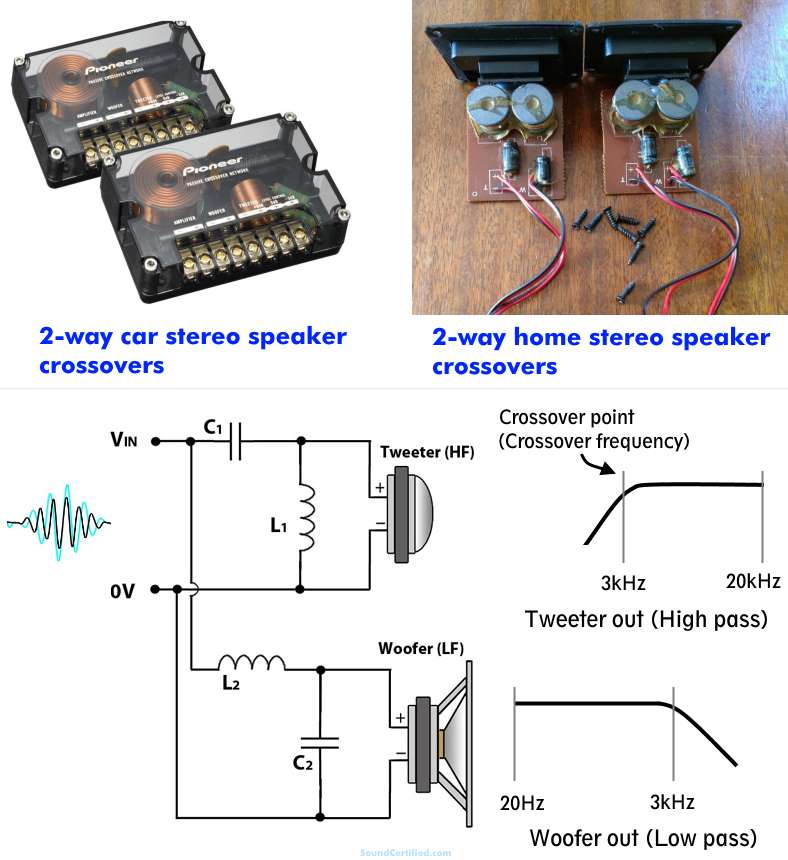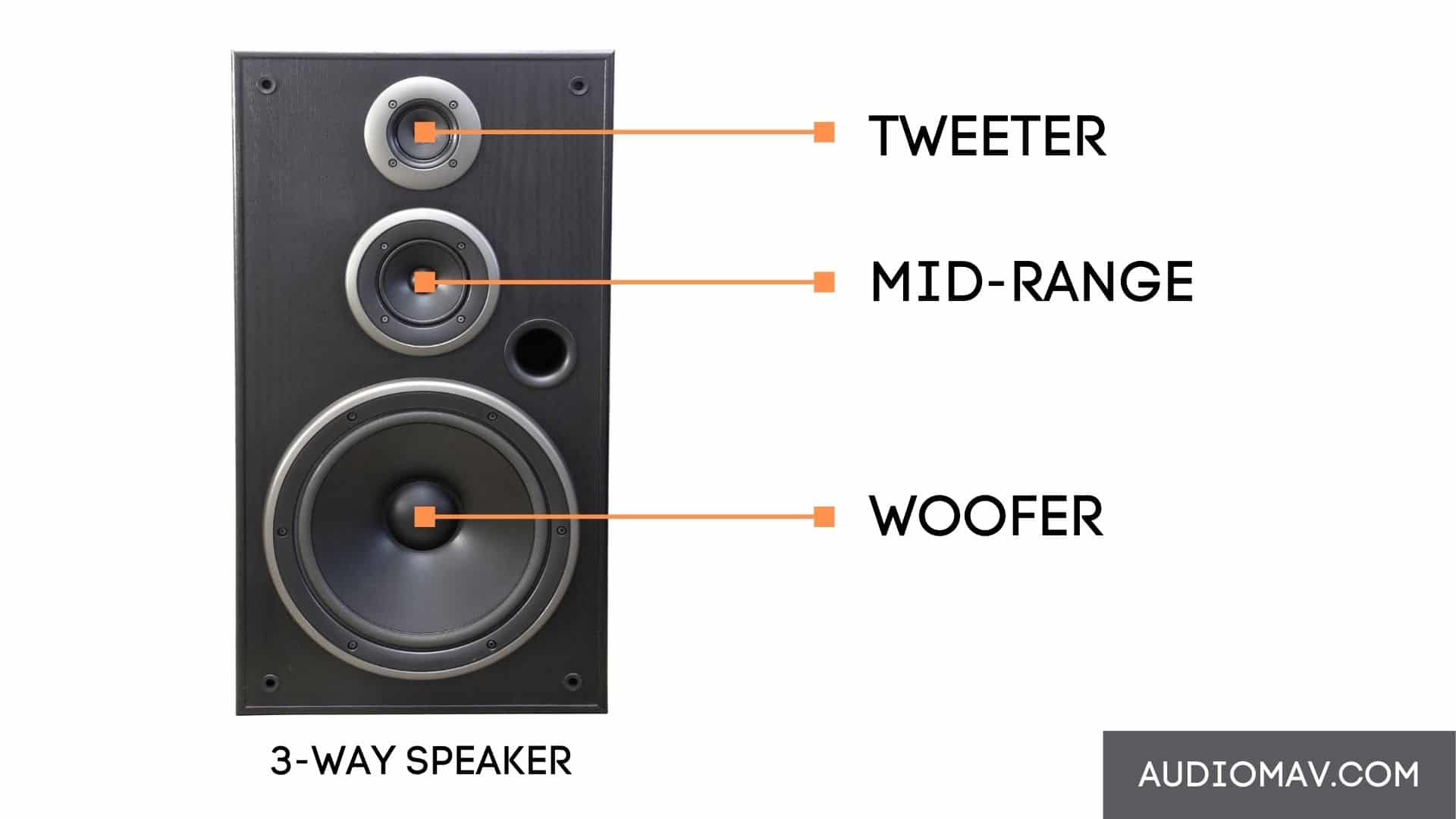Speakers and speaker kits
Table Of Content

From the example above, we can see that the tweeter shown has a good output until somewhere below 2 kiloHertz (2kHz). Knowing that we’ll want to choose a crossover frequency that’s at least 2kHz or higher. Although it’s a separate topic, the L-R crossover isn’t sensitive to speaker driver resonance which is another benefit.
Hybrid Crossovers
If you’re interested in learning more I encourage you to get your hands on a copy of Vance Dickason’s The Loudspeaker Design Cookbook. Take a look at our professional audio equipment, or reach out with questions. We are happy to help you navigate our world of speakers, and make your life sound better. Cerwin-Vega is your go-to source for professional audio equipment; we design, build, and sell all of our high-quality audio equipment and accessories. Ryan Waniata is a professional writer, editor, video host, and product reviewer.
Way Speaker Kits: Tweeter, Midrange, & Woofer
In this configuration, low frequencies are sent to a subwoofer speaker cabinet which is designed to reproduce only low frequencies. The remaining frequencies in the low-mid, mid, and high ranges are sent to a separate cabinet. Tweeters are loudspeaker drivers designed to reproduce high frequencies.
What Is The Best Type Of Speaker Crossover Design For My Application?
That makes them a more enticing choice, especially if you don’t want to add a subwoofer. It’s perhaps no surprise that my favorite tower speakers are the centerpieces of the best full surround sound system. They combine a pair of SVS Primes with the brand’s excellent SVS center and satellite speakers to create a Voltron-esque beast of synergetic surround sound excellence. Once approximatecrossover frequencies and filter orders are determined, a filter can be developedin CAD. For the purposes of this designanalysis, a 2nd order crossover was designed which approximatelymatches a Butterworth filter target. Additional response shaping elements were added where needed to meet thedesign requirements.
Woofer
Flared ports are not all the same and reaching the target tuningfrequency is easy to determine by plugging in the necessary parameters into themanufacturer’s website. Just note thatit is best to leave the port tubes a little long and trim to reach the targettuning frequency. Tuning an internalvolume of 2.2 cubic feet to 27Hz requires a port tube that is approximately 9.7inches long for a 3-inch diameter port. This port occupies approximately 0.04 cubic feet so the internal cabinetshould account for the port volume. Also, it is important to determine the volume of internal bracing andestimate the volume of the drivers protruding into the cabinet.
The Top Ten Most Influential Speakers of the Last 50 Years - Audioholics
The Top Ten Most Influential Speakers of the Last 50 Years.
Posted: Wed, 31 Dec 2014 08:00:00 GMT [source]
Pressing the speakers against the walls will produce bloated and flabby bass. Start by placing your speakers as far apart from each other as they are from your listening position. So, if you’re sitting 8 feet away from the speakers, they should stand about 8 feet apart. Then you want to angle or “toe” them inward toward your primary listening spot. From the M-shaped Aluminum/Magnesium tweeters to the rigid cabinets, the Focal No.2s are well-built, stylish, and yet understated.
Passive Crossovers
Ultimately, the best speaker crossover design for your application will depend on what type of performance you are trying to achieve. When it comes to a speaker crossover design, the best type for your application depends on the tweeter selection and crossover calibration. Passive crossovers are placed between the output of the power amplifier and the input of the loudspeaker drivers. Woofers are loudspeaker drivers designed to reproduce low and mid-range frequencies. Based on its size, shape, and design, each speaker is responsible for accurately reproducing a specific range, or band, of frequencies. Using a crossover allows control over which frequencies are sent to which speakers, so that all speakers in the system work together to achieve the best possible sound quality.
Floorstanding speakers are the perfect stereo centerpieces for a large listening room or home theater. This guide offers a wide array of choices to fit various budgets and listening spaces. All of them have been carefully selected after deep deliberation to provide the best performance, visual aesthetics, and sheer value in their respective categories.
Choose Appropriate Components
I’m here to tell you that building a speaker crossover doesn’t have to be expensive or difficult. With just a few simple tools and a little bit of know-how, you can create high-quality audio systems that won’t break the bank. Speaker crossover systems are also used to optimize the sound quality of multi-cabinet speaker systems, in which separate speaker enclosures are used. In these cases, each speaker cabinet is tuned to reproduce a specific frequency band. Subwoofers are loudspeaker drivers designed to reproduce low frequencies.

It did not ultimately meet the design goal of+/-3dB frequency response deviation but it plays low bass with authority andsounds very good overall. When you buy inductors capacitors or resistors there are usually only certain valuesavailable. If you cannot find the component you need, thengo with the closest match. You can also combine two components in Parallel or Seriesto get a different value that you can't find normally. MetalizedPolypropylene capacitors are the best, but are also much more expensive.Again, be sure to investigate the resistance of these components before purchasing.
I have had success with paint and real woodveneer but both require a little practice and much patience. Once you havedecided on a finish, do some research to determine a good application method. I’ve never gotten a finish right the firsttime, so practicing on scrap material is highly advisable. Depending on the complexity of the build, you may need to spend some time researching components and wiring diagrams in order to make sure everything is done correctly.
Bipolar (“BP”, non-polarized) capacitors are usually marked as such while polarized types have one side with a stripe marking the negative connection. And once you hear it, it’ll be the only bass you want to listen to going forward. Our bass mirrors the groove, so you won’t hear it thumping and knocking the other sounds out of the way.
None of this is strictly necessary, but there’s almost always a path to improving the sound of your setup by adding or upgrading your speakers. Unless you’re buying “active,” self-powered speakers that feature internal amplification, you’ll need an amplifier or an A/V receiver to power your tower speakers. A stereo amplifier with a power rating of at least 30 watts or more per channel should be ample to power any of the speakers on our list. If you’re building a full home theater with surround sound, though, you’ll likely want an A/V receiver, which should be able to supply five or more speakers with enough power to put out their best sound. As a final step,it is absolutely necessary to set the values of capacitors, resistors andinductors in the CAD editor to values you can actually purchase. If thecrossover parts are expensive, you can attempt to reduce component values andsubsequently plot their effect on the final response.
Comments
Post a Comment